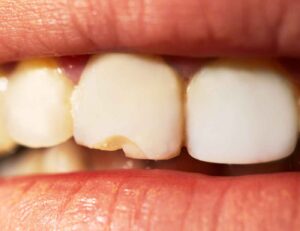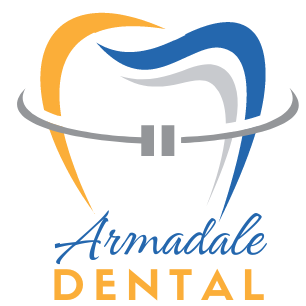Repairing a Chipped or Broken Tooth: A Comprehensive Guide
Crunching down on hard substances can sometimes lead to an unpleasant surprise – a chipped or broken tooth. The enamel covering our teeth, although incredibly durable, has its limits. Whether it’s a fall, a blow to the face, or biting down on something hard, a tooth can chip or break. If you find yourself in this situation, there’s no need to panic. Modern dentistry offers various solutions to fix a chipped or broken tooth.

How to Care for a Chipped or Broken Tooth
The immediate aftermath of a chipped or broken tooth requires careful attention. Taking the right steps can prevent further damage and potential infection:
- See Your Dentist: Schedule a visit to your dentist as soon as possible. Delaying treatment might exacerbate the damage or lead to an infection, possibly resulting in tooth loss.
- Manage Pain: If there’s pain, take acetaminophen or another over-the-counter pain reliever. Rinse your mouth with saltwater for relief.
- Protect Sharp Edges: If the break has left a sharp or jagged edge, cover it with wax paraffin or sugarless chewing gum. This prevents cuts to your tongue, lips, or cheeks.
- Choose Soft Foods: While awaiting treatment, stick to soft foods. Avoid biting down on the broken tooth.
Treatment Options for a Chipped or Broken Tooth
The treatment your dentist recommends depends on the extent of the damage. Here are common methods used to repair a chipped or broken tooth:
1. Dental Filling or Bonding
If only a small piece of enamel is broken, a filling might be sufficient. For visible areas, dentists often use bonding, a process involving a tooth-colored composite resin. Bonding is a simple, non-invasive procedure that typically doesn’t require numbing.
- Surface Etching: The dentist roughens the tooth surface with a liquid or gel.
- Adhesive Application: An adhesive material is applied, followed by tooth-colored resin.
- Shaping and Hardening: After shaping the material to mimic a natural tooth, an ultraviolet light hardens it.
2. Dental Cap or Crown
For more substantial damage or extensive decay, a crown or cap might be necessary. The dentist grinds or files the remaining tooth, covering it with a crown made of metal, porcelain, resin, or ceramic. This protects and enhances the tooth’s appearance.
- X-rays and Preparation: X-rays are taken, and the dentist numbs the area. They remove enough of the remaining tooth to accommodate the crown.
- Impressions: Using a putty-like material, the dentist makes impressions sent to a lab for crown fabrication.
- Temporary Crown: While waiting for the permanent crown, a temporary one is placed.
- Final Placement: In the second visit, the permanent crown is checked for fit and permanently cemented.
3. Dental Veneers
For a broken or chipped front tooth, veneers offer a cosmetic solution. These thin shells, made of porcelain or resin composite material, cover the entire front surface of the tooth.
- Enamel Removal: About 0.3 to 1.2 millimeters of enamel is removed.
- Impression and Placement: Impressions are sent to a lab for veneer creation. In a subsequent visit, the veneer is etched, cemented, and hardened with a special light.
4. Root Canal Therapy
If the chip exposes the pulp (the tooth’s center with nerves and blood vessels), bacteria can cause infection. Root canal therapy involves removing the infected pulp, cleaning the root canal, and sealing it. A crown is often needed to protect the weakened tooth.
Treatment for Broken or Knocked-Out Teeth
For severe injuries or unconsciousness, call 911. A knocked-out permanent tooth is an emergency, with a reimplantation window of 30 minutes.
- Collect Teeth: Handle teeth delicately, touching only the crown. Rinse gently if necessary and store in milk or between the cheek and gum.
- Reinsert or Store Teeth: If possible, reinsert permanent teeth. Store others in milk or between cheek and gum to prevent drying.
- Treat Symptoms: Control bleeding, apply a cool compress for swelling, and manage pain with acetaminophen or ibuprofen.
- Seek Immediate Help: For knocked-out teeth, see a dentist or go to an emergency room promptly. Even if reinserted, consult a dentist. For chipped or broken teeth, call a dentist.
In any dental emergency, swift action is crucial. Proper care and professional intervention can restore the function and aesthetics of a chipped or broken tooth. Don’t hesitate to seek help from your dentist for a personalized treatment plan.
